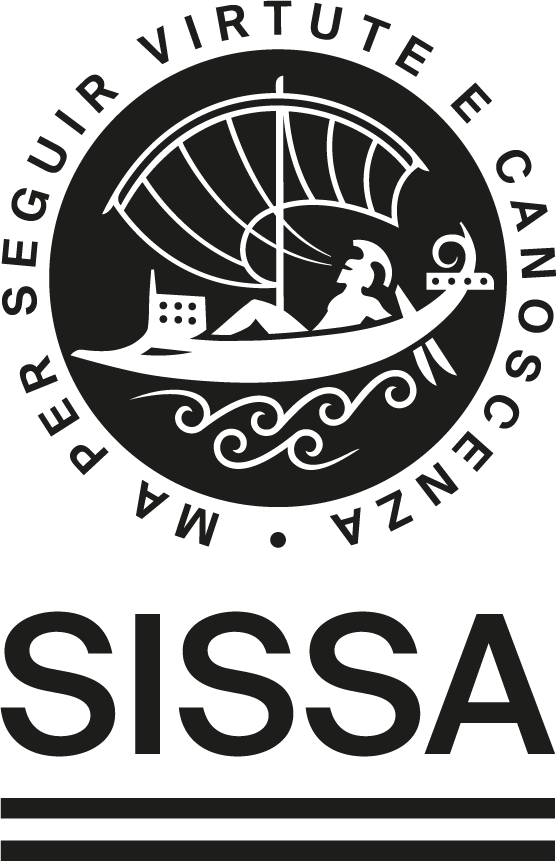by M. Dalmonte (2 credits, type C)
Idea of the course: make people familiar with techniques in the field of synthetic quantum systems, in particular cold atom and trapped ion architectures, tackling them from the theoretical quantum optics viewpoint.
Goals: gain the basic theoretical tools and methods to understand in some detail experiments in synthetic quantum systems.
Enabling skills: being able to propose a novel technique to realize or probe quantum matter.
Pre-requisites: master equation, a tiny bit of band theory (Bloch theorem), atomic physics (solution of the Hydrogen atom and angular momentum theory), advanced quantum mechanics (including some basics of scattering). I will not cover laser theory.
Modules:
- ) Atom–light interactions — basics and simple modelling
- Lecture 1
- basic discussion on setups and energy scales
- crash course in atomic physics
- reviewing the Hydrogen atom structure
- useful extras: Zeeman effect, Rydberg states
- Lecture 2
- atom-field interactions: Schroedinger equation in the electric dipole approximation
- atom-field interactions for quantised fields: the Jaynes-Cummings model
- discussion on the rotating-wave approximation: validity?
- basic properties of the JC model: undressed and dressed spectra
- Lecture 3
- dynamics of atoms coupled to a single mode: Rabi oscillation, collapse and revivals
- brief discussion of Rydberg and ion experiments
- effects of off-resonant coupling: the AC Stark shift
- coupling to a continuum of states: spontaneous emission
- Fermi golden rule and emission from flat spectrum
- Wigner-Weisskopf theory of spontaneous emission, irreversibility of Hamiltonian dynamics
- ) Cold atoms in optical lattices
- Lecture 4
- dipole trapping: basic ideas
- how to treat spontaneous emission
- coupling to a single state: red and blue detuned lattices
- Lecture 5
- from microscopic to Hubbard models
- brief comments on energy scales
- reminder on Bloch theorem
- solution of single wave-function problem, energy bands
- Wannier functions and Hubbard model representation
- Lecture 6
- interacting Hamiltonian and Bose-Hubbard models
- basic aspects of Bose-Hubbard models: Superfluid to Mott transition
- review of progresses in Bose-Hubbard model physics
- ) Advanced quantum engineering in atomic systems
- Lecture 7
- interaction tuning: contact interactions (resonances, closed-shell atoms)
- interaction tuning: spin-exchange Hamiltonians
- interaction tuning: magnetic atoms and polar molecules
- Lecture 8
- classical gauge potentials: Jaksch-Zoller and Gerbier-Dalibard approaches
- a small exercise: spontaneous emission and excitations to other bands at the single building block level
- synthetic gauge potentials in synthetic dimensions: quantum Hall ribbons
- beyond the Hofstadter butterfly: combining interactions and background potentials
- Lecture 9
- atoms interacting via cavity modes: infinite-range (?) interactions
- Rydberg atoms: two-atom interactions, spaghetti, and Rydberg blockade
- Rydberg atoms in optical tweezers and strongly interacting spin systems [frozen regime]
- ) Quantum engineering with trapped ions
- Lecture 10 (basics)
- microscopic degrees of freedom at hand: alkaline-earth ions
- trapping ions: Penning and Paul traps
- quantum mechanical models for single-ion traps
- light-matter interactions: how spins talk to collective modes via light
- Lecture 11 (applications)
- spin models with trapped ions in Paul traps
- quantum computing with trapped ions: Cirac-Zoller and Molmer-Sorensen gates
- Lecture 12 (entanglement measurements)
- measuring entanglement properties in synthetic quantum systems
- a brief review of bipartite entanglement measures and witnesses
- overview of measurement methods: tomography, copies, entanglement Hamiltonian engineering
- Renyi entropies from random measurements in trapped ion chains

